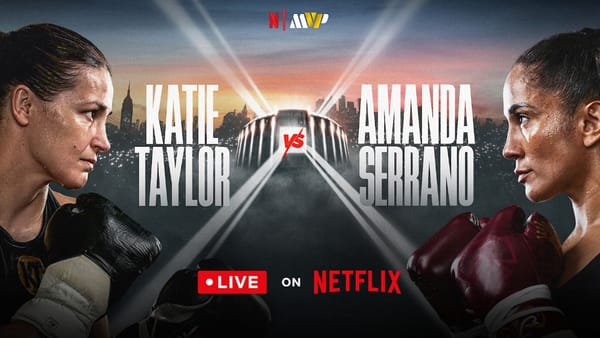Platform Wars: How X and Meta Are Battling for the Future of Sports Engagement

When Lionel Messi launched that jaw-dropping chip from the halfway line last week, the moment didn’t wait for traditional broadcasters to catch up. It detonated instantly across digital platforms. Within four seconds, an amateur fan’s shaky smartphone replay had gone viral on X (formerly Twitter), racking up over 6 million views before the second angle even aired on television. Meanwhile, on Meta’s Threads, that same clip seeded a nuanced discussion thread featuring fans, journalists, and even retired players, who debated Messi’s incredible longevity and impact — a conversation that ballooned to more than 1,200 comments.
This is the new frontline of digital sport: not on the field, but in the social feed.
The competition between X and Meta isn’t just a battle of tech features; it’s a fight for the hearts, minds, and eyeballs of sports fans around the world. In an era where attention is currency, and engagement defines influence, these platforms are redefining how we experience sport — turning every play into a social event and every fan into a commentator.
The Evolution of the Sports Feed
X has been the go-to platform for real-time sports chatter for over a decade. Known for its lightning-fast updates and global reach, it has become synonymous with breaking news and instant reactions. But the platform is now racing to transform itself from a microblogging site into a comprehensive sports ecosystem.
On June 20, CEO Linda Yaccarino unveiled several ambitious initiatives that signal X’s intent to dominate live sports engagement:
- Real-time widgets are being tested to keep fans updated with live scores, player stats, and key game moments without leaving the app. This keeps users locked in during matches, reducing the need to toggle between different sources (TechCrunch, 2025).
- AI-generated highlight summaries promise to deliver bite-sized video clips and text summaries that cater to fans with limited time but a deep desire to stay informed (The Verge, 2025).
- Strategic partnerships with sports leagues aim to secure rights-cleared short clips for in-stream sharing, a move designed to boost engagement while sidestepping legal issues that have hampered user-generated content in the past (Sports Business Journal, 2025).
Meanwhile, Meta is playing a multi-platform strategy, leveraging its sprawling ecosystem of apps — Threads, Instagram, and Facebook — to appeal to different demographics and fan behaviors. With the rise of short-form video, Meta is banking on AI-powered Reels that turn game moments into viral memes or creative commentary, targeting younger, meme-savvy Gen Z fans who consume sports less as events and more as cultural touchstones (Meta Newsroom, 2025).
This is not simply a feature race. It’s a battle for where fans go when the game happens—and where brands want to show their ads.
💬 The Stakes: Attention, Advertising, Authenticity
Sports content consistently punches above its weight in terms of engagement and ad revenue potential, and these platforms know it.
- During the 2022 FIFA World Cup, X reported an astonishing 147 billion impressions on World Cup-related content. This immense volume translated into a windfall for advertisers, who leverage the platform’s real-time targeting to reach passionate global audiences (X Press Room, 2022).
- Meta’s Instagram noted that Sports Reels were watched on average 3.5 times longer than entertainment-focused Reels during the 2025 NCAA March Madness tournament, showing the stickiness of sports content even on a platform known for lifestyle and entertainment (Instagram Insights, 2025).
Why is sports content such a magnet? It’s live, emotional, and unpredictable — characteristics that create prime conditions for real-time conversations, viral moments, and community bonding. Advertisers value these properties highly because they create a captive and engaged audience ready to interact.
X’s approach is about immediacy—delivering the fastest possible access to what’s happening, augmented by AI to slice through the noise. Its addition of in-app betting integrations taps into the lucrative sports gambling market, further incentivizing user engagement.
Meta’s strength lies in fostering community and depth. Threads acts as a digital fan forum, encouraging conversations beyond the scoreline, while expert-curated Reels provide richer storytelling and analysis. Meta Horizon’s VR content, though still early stage, promises immersive experiences like never before.
Influencers, Athletes & the New "Press Room"
The traditional press room is evolving into a decentralized, digital arena. Athletes no longer rely solely on media outlets to shape their narrative — they control the message directly on social platforms, choosing where and how to engage fans.
Consider:
- Angel Reese’s viral hairstyle reveal on June 22, which exploded to 10 million views on X and trended for hours on Threads. This wasn’t just a style statement — it was a cultural moment that amplified Reese’s brand and connected her with fans across platforms (ESPN, 2025).
- Josh Allen’s sideline candid takes from Buffalo Bills practice gained traction first on Threads, then were amplified through NFL-endorsed Instagram posts, illustrating the cross-platform nature of modern sports communication (NFL Media, 2025).
The social platform is the press room. Players understand this, using it to build their personal brands, engage fans authentically, and sometimes even break news or respond to controversies without filters.
For journalists, this means adapting coverage to reflect how players are shaping stories in real time, and how fan interactions on these platforms influence broader sports narratives.
🔮 What’s Coming Next?
The battle for digital sports dominance is far from over. Here’s what insiders expect in the next 12 months:
- Platform Exclusivity Deals
Leagues are increasingly exploring digital-first rights agreements that grant exclusive access to locker room footage, mic’d-up player segments, and behind-the-scenes content. Expect some of this content to live exclusively on X or Meta, deepening the platforms' value propositions and locking in fans (Sports Business Journal, 2025). - Personalized AI Feeds
Rumors suggest X is developing an AI-curated “My Game Day” feed that blends team updates, fantasy stats, and local fan tweets into a single personalized stream. This hyper-customized approach aims to increase time spent on the platform by delivering the exact content each fan craves (The Verge, 2025). - Mixed Reality Sports
Meta is pioneering augmented reality filters and immersive features allowing fans to watch 3D highlights and replays projected into their physical space. This could redefine fan engagement, merging the physical and digital realms for unprecedented interactivity (Meta Horizon Blog, 2025).
These developments will not only shape fan experiences but will also redefine the economics of sports media, content creation, and advertising.
🧾 What This Means for Sports Media
For journalists, creators, and content strategists, the landscape demands new skills and strategies:
- Post fast on X to capture breaking moments and join real-time conversations. Speed and relevance are key to riding viral waves (Poynter Institute, 2025).
- Go deep on Threads to cultivate engaged communities, foster nuanced discussions, and provide expert analysis that complements the quick hits on X (Nieman Lab, 2025).
- Follow where fans watch, not just what they watch. With so many platforms and cross-app consumption patterns, media must be present where conversations happen, sometimes even before games begin (SportsPro, 2025).
The future sports rivalry might no longer be between teams on the field, but between X and Meta off it — vying for attention, ad dollars, and cultural relevance.
Every scroll, click, or comment is a point on this new scoreboard. And in the digital age, the platform that controls the fan’s feed could ultimately control the game’s narrative.





